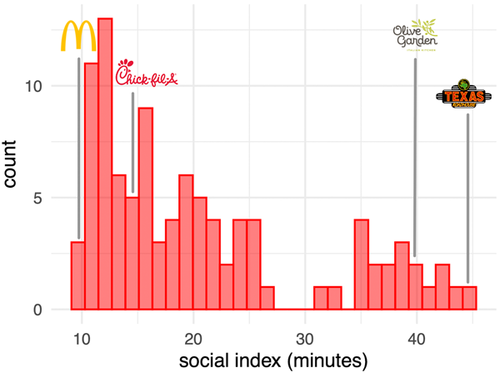
The consumer city crisis during the COVID-19 pandemic
Since COVID-19 was declared a pandemic, I have been focused on understanding the impacts of this virus on people’s behavior, mainly in consumer cities. Several studies have looked for social patterns changes and what the “new normal” would look like over the past two years. We decided to use the same methodological approach that we have used for several of my research projects: a very well-defined theoretical framework that supports our hypotheses through the thorough analysis of large datasets. Today, I want to share with you one of my latest papers: “Demand for Social Interactions: Evidence from the Restaurant Industry during the COVID-19 Pandemic,” which was recently published in the Journal of Regional Science.

New paper on neighborhood attributes and obesity risks in Singapore
Abstract: We estimate the degree and scope of PM2.5-induced negative price shock in Korea’s local housing markets, taking a two-stage hedonic approach. For the analysis, Korea’s local PM2.5 levels are treated as endogenous and are instrumented with regional air pollutants from China. We find that a unit µg/m3 PM2.5 level increase in a Korean city is associated with a 3.7% decline in local residential property value. Long-range transboundary pollution has significant effects on Korea’s local PM2.5 levels with an elasticity of 0.05. These results enrich the sparse hedonic literature on local air-quality valuation in connection to long-range transboundary pollution in East Asia. The advanced methodological features presented in our two-staged identification strategy with a novel instrument is another contribution of this paper.

New paper on transboundary air pollution (from China to Korea)’s negative impacts on the housing prices in Korea
Abstract: We estimate the degree and scope of PM2.5-induced negative price shock in Korea’s local housing markets, taking a two-stage hedonic approach. For the analysis, Korea’s local PM2.5 levels are treated as endogenous and are instrumented with regional air pollutants from China. We find that a unit µg/m3 PM2.5 level increase in a Korean city is associated with a 3.7% decline in local residential property value. Long-range transboundary pollution has significant effects on Korea’s local PM2.5 levels with an elasticity of 0.05. These results enrich the sparse hedonic literature on local air-quality valuation in connection to long-range transboundary pollution in East Asia. The advanced methodological features presented in our two-staged identification strategy with a novel instrument is another contribution of this paper.
